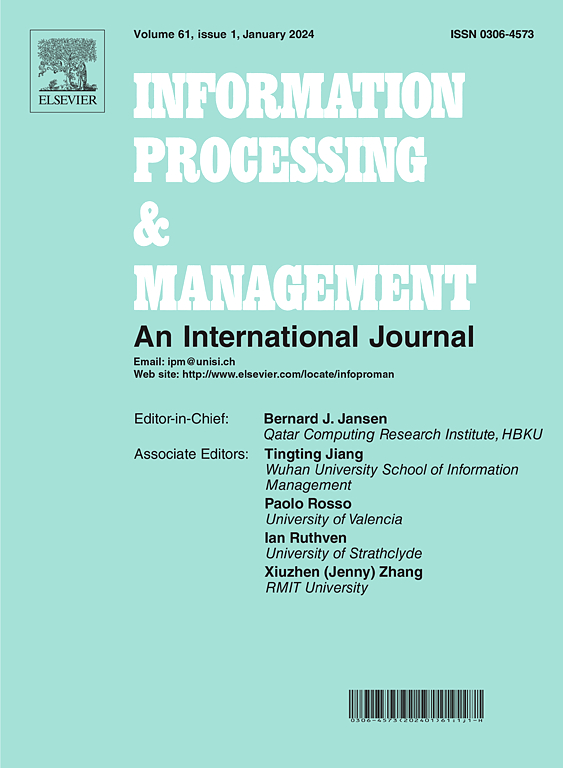从多场景视频中选择关键帧进行应力检测
IF 7.4
1区 管理学
Q1 COMPUTER SCIENCE, INFORMATION SYSTEMS
引用次数: 0
摘要
在现代社会,压力是一个日益严重的全球性问题,影响着人类的身心健康。早期发现压力对于及时干预和预防健康衰退至关重要。尽管在周围环境中广泛部署的摄像机提供了一种无接触的应力检测通道,但与基于生理和语言信号的方法相比,计算成本非常高。为了经济有效地使用多场景视频,我们提出了一种细粒度的两阶段关键帧选择框架,用于有效的应力检测。第一个面向情感的关键帧选择阶段,由于帧率高,旨在减少每个视频的无关帧和冗余帧。第二个面向压力的关键帧选择阶段旨在掌握反映一个人压力状态的情绪动态,期望通过同伴参与的协作深度强化学习,以更少的帧获得良好的效果。对开发数据集的性能分析突出了我们的两阶段多场景协同关键帧选择过程在应力检测中的优势,三标记应力检测的准确率为83.61%,f1分数为83.48%,五标记应力检测的准确率为71.80%,f1分数为66.78%,每视频的帧选择率为0.14%。本文最后讨论了本文的意义和进一步可能的改进。本文章由计算机程序翻译,如有差异,请以英文原文为准。
Keyframes selection from multiscene videos for stress detection
In the modern world, stress is a rising global issue that impacts both human physical and mental health. Early stress detection is vital for timely intervention and prevention of health decline. Although widely deployed video cameras in surroundings offer a contact-free channel for stress detection, the computational cost is exceedingly high compared with the methods based on physiological and linguistic signals. To use multiscene videos cost-efficiently, we propose a fine-grained two-stage keyframe selection framework for efficient stress detection. The first emotion-oriented keyframe selection stage intends to reduce irrelevant and redundant frames per video owing to the high frame rate. The second stress-oriented keyframes selection stage aims to grasp emotion dynamics reflecting one’s stressful states, expecting to achieve a decent effect with fewer frames through peer-attended, collaborative deep reinforcement learning. The performance analysis on the developed dataset highlights the benefits of our two-stage multiscene collaborative keyframe selection process for stress detection, achieving an accuracy of 83.61% and an F1-score of 83.48% in three-labeled stress detection and an accuracy of 71.80% and an F1-score of 66.78% in five-labeled stress detection, with a frame selection rate of 0.14% per video. Implications and further possible improvements are discussed at the end of the paper.
求助全文
通过发布文献求助,成功后即可免费获取论文全文。
去求助
来源期刊

Information Processing & Management
工程技术-计算机:信息系统
CiteScore
17.00
自引率
11.60%
发文量
276
审稿时长
39 days
期刊介绍:
Information Processing and Management is dedicated to publishing cutting-edge original research at the convergence of computing and information science. Our scope encompasses theory, methods, and applications across various domains, including advertising, business, health, information science, information technology marketing, and social computing.
We aim to cater to the interests of both primary researchers and practitioners by offering an effective platform for the timely dissemination of advanced and topical issues in this interdisciplinary field. The journal places particular emphasis on original research articles, research survey articles, research method articles, and articles addressing critical applications of research. Join us in advancing knowledge and innovation at the intersection of computing and information science.
 求助内容:
求助内容: 应助结果提醒方式:
应助结果提醒方式:


